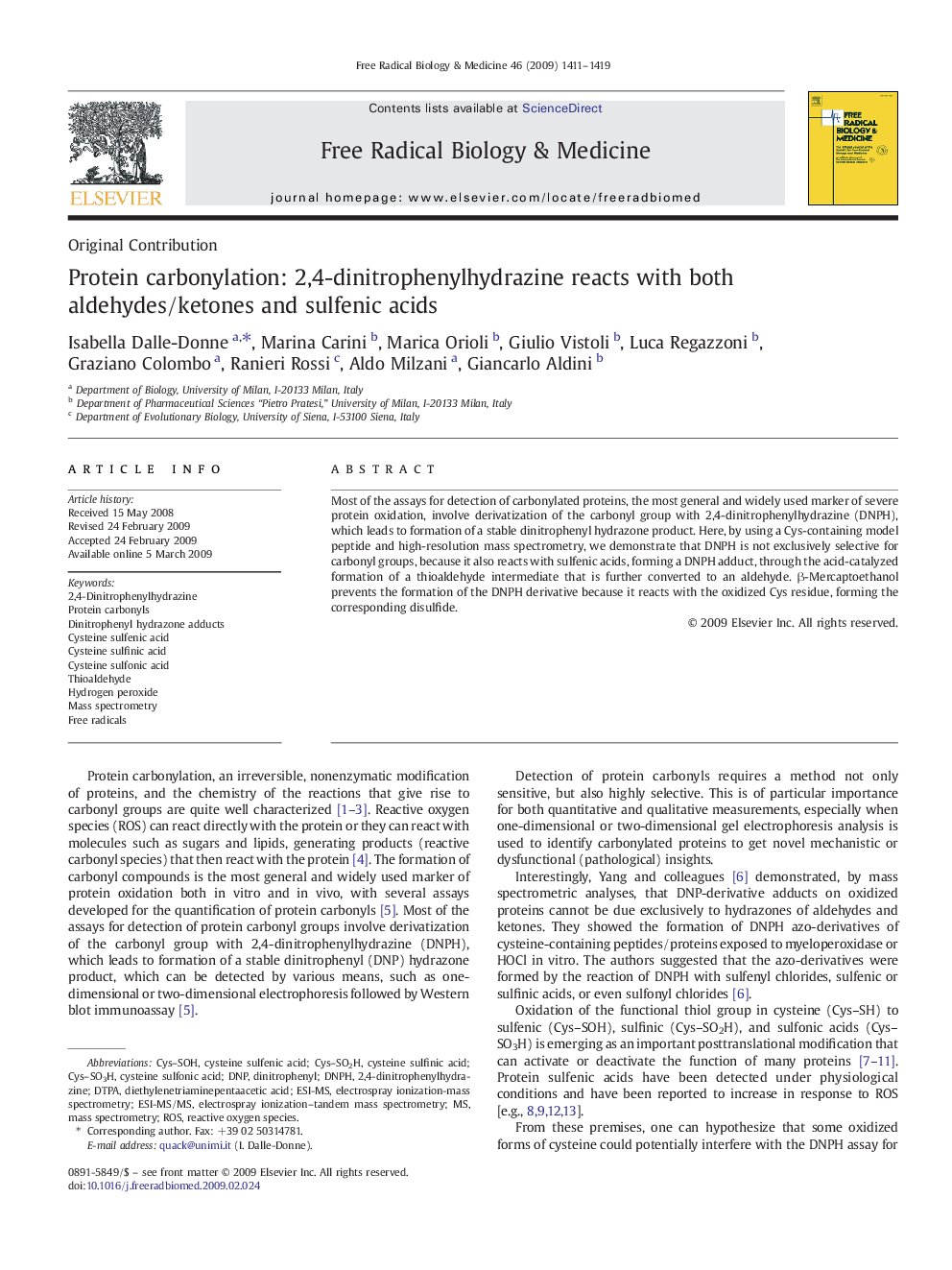| Article ID | Journal | Published Year | Pages | File Type |
|---|---|---|---|---|
| 1910242 | Free Radical Biology and Medicine | 2009 | 9 Pages |
Most of the assays for detection of carbonylated proteins, the most general and widely used marker of severe protein oxidation, involve derivatization of the carbonyl group with 2,4-dinitrophenylhydrazine (DNPH), which leads to formation of a stable dinitrophenyl hydrazone product. Here, by using a Cys-containing model peptide and high-resolution mass spectrometry, we demonstrate that DNPH is not exclusively selective for carbonyl groups, because it also reacts with sulfenic acids, forming a DNPH adduct, through the acid-catalyzed formation of a thioaldehyde intermediate that is further converted to an aldehyde. β-Mercaptoethanol prevents the formation of the DNPH derivative because it reacts with the oxidized Cys residue, forming the corresponding disulfide.
